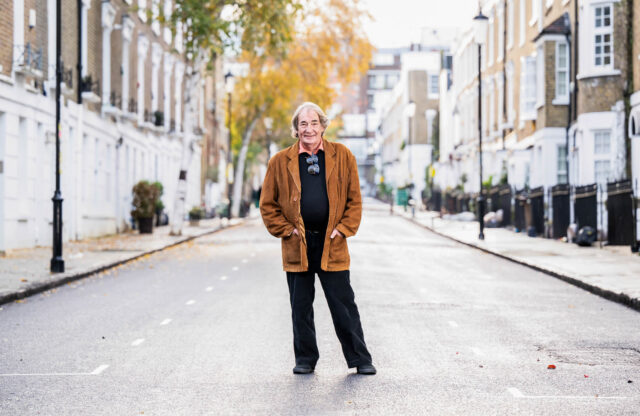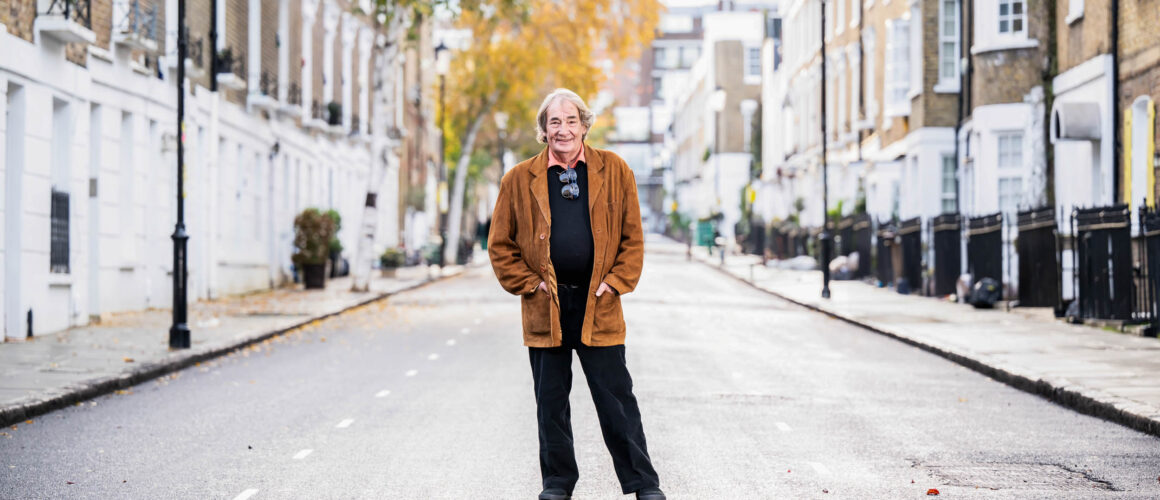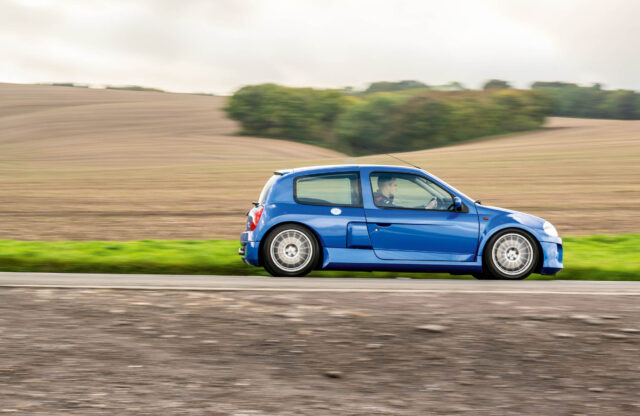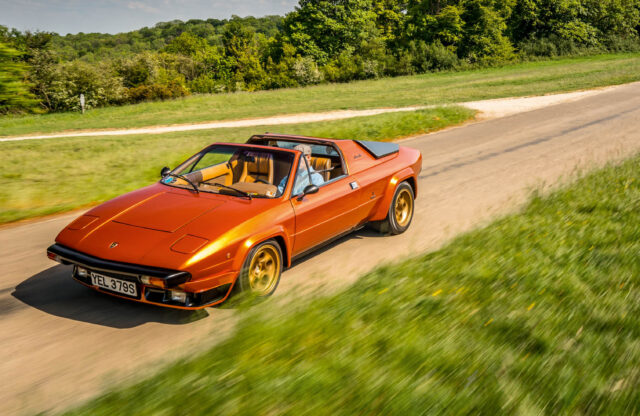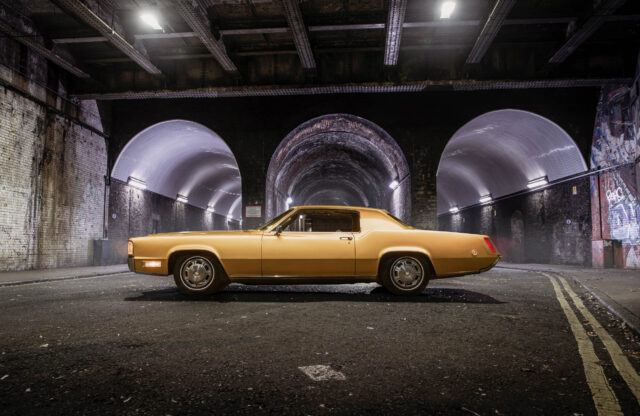We’re saddened to report the passing of the charismatic racer Rupert Keegan, known best for winning the 1976 British Formula 3 Championship, which propelled him into F1 – leading to his victory of the Aurora Formula One Championship in 1979. We recently published a full interview with Keegan in issue 253, which we have published below in tribute.
A life in motorsport, from Formula 3 to Formula 1, via frustration with Sir John Surtees to turning down an offer from Paul Newman. Interview by James Page
Motor racing has always done a good line in nicknames, but few are better-suited to their subject than ‘Muttley’ is to Rupert Keegan. It’s now well over 40 years since he was christened as such by the Hesketh team, but the mischievous laugh that he shares with Dick Dastardly’s canine companion is still very much intact. Despite the fact that he’s only just flown into the UK when we meet, he’s on excellent form as he looks back over a career that took him from precocious Formula 3 champion to Formula 1, Le Mans and Indianapolis.
Keegan admits with a smile that, even as a youngster, he was ‘a bit of a bad boy’. He was educated at King’s Ely – one of the oldest schools in the world, with a list of alumni that includes Edward the Confessor – and he and his friends would regularly sneak out after dark. In fact, he almost missed one of his exams when his motorbike broke down on the way back from a night out in Cambridge.

After being ‘thrown out of school for the last time’, Keegan needed to decide upon a career and told his father that he wanted to become an actor. Mike Keegan was ‘a bit of toughie’ who had flown Liberators in the Far East during the war. Along with James Barnby and Cyril Stevens, he founded the BKS airline, and later owned Transmeridian Air Cargo and British Air Ferries. Mike was distinctly unimpressed with the thought of his son being an actor and told him to think again.
Rupert’s uncle had done some racing, and he’d always been fascinated with that world. After watching Emerson Fittipaldi win the 1972 British Grand Prix, he was hooked and decided that here was his Plan B. RADA’s loss would be motorsport’s gain.
His first taste of a single-seater came via a Motor Racing Stables course at Brands Hatch, and he took to it straight away. People were soon telling Keegan Sr that they needed to start thinking about doing this properly, and there followed a meteoric rise through the ranks for the quick but initially crash-prone youngster. By 1976, however, there was car control to go with the undoubted speed, and he fought a year-long battle against Bruno Giacomelli for the British Formula 3 Championship. Giacomelli was in the works March 763, while Keegan started the season with an older 743. He won the first four races, but then his Italian rival started to get the upper hand.
‘I had Adrian Reynard – a great friend of mine – working with me,’ says Keegan. ‘He was coming up with all sorts of stuff – different wing profiles, different noses – so we managed to be competitive. In the meantime, Adrian had been designing his own Formula 3 car for Hawke. I drove it once and it wasn’t going to be a world-beater. I probably gave up on it a bit too quickly, but it would have cost me the championship so I switched to a Chevron and started winning again.’

By the time they arrived for the final round at Thruxton, Keegan had a narrow points lead over Giacomelli and knew that, if he could hold on and win the title, there was a Hesketh Formula 1 drive waiting for him. Giacomelli’s car was quicker around the fast airfield circuit and he duly lined up on pole position, with Conny Andersson alongside him and Keegan completing the three-car front row. Keegan knew that if Giacomelli beat him away, the Italian would disappear into the distance and the championship would be lost.
Considering what was at stake, it didn’t take a genius to work out what might happen. ‘I went to Conny and said, “I’m going into that first corner first, so I suggest you don’t be there!”’ Sure enough, there was, let’s say, a coming-together that accounted for both title contenders – plus a few others.
‘I was standing on the bank with Bruno and the drivers of all the other cars that I’d taken out, and Bruno came up to me. He was really angry. He said, “I’ll get you next year in Formula 2.” I said, “No you won’t, Bruno – I’ve got a Formula 1 contract!” When I got back to the paddock, the first person to come up and congratulate me was [March co-founder] Robin Herd. He said, “If it was me, I’d have done exactly the same thing.”’
So, at the age of 22, Keegan made his Formula 1 debut in 1977 with Hesketh Racing. The team was still based at Lord Hesketh’s Easton Neston estate, near Silverstone, but was no longer the charismatic front-running force it had once been. There was, however, no shortage of talent working in the old stable block, from team manager Bubbles Horsley to engineers Nigel Stroud and Frank Dernie, who between them developed the new Hesketh 308E.
‘It was so much fun,’ says Keegan of that year. ‘All the guys were brilliant. We didn’t have the best car – it showed potential here and there, but it also had a few fragile parts. The front suspension used to break and we had a couple of big accidents.’
He came within an ace of scoring a point in Austria before a late spin under pressure from the McLaren of Jochen Mass demoted him to seventh place. It was still a good result considering that he’d started the weekend by getting arrested…
‘I left the hotel in plenty of time, but got down to the main road and it was solid traffic. We were ten miles from the track and I thought there was no way I’d get there in time, so I just overtook all the traffic on the wrong side of the road. Of course, we went over this bridge and there’d been an accident. The police were there and tried to stop me; I carried on, they caught me and took me to the cop shop. Bubbles had to come down and bail me out.’

That was also the weekend on which Keegan was first approached by Colin Chapman. Lotus sponsor John Player & Sons wanted a British driver alongside Mario Andretti in 1978, and Keegan got as far as signing a contract before Chapman did a deal with Ronnie Peterson instead. Young ‘Rupe’ lost out and found a seat with Surtees, and does not remember the experience with great fondness.
‘It was difficult. Every Tuesday morning, you’d have to go down to Goodwood to test. You’d be fined if you didn’t get there on time, which was 8am or whatever, but you wouldn’t drive the car until after midday because John [Surtees] would drive it. He’d get in, soften the springs, take all the wings off, do this, do that. Eventually, I’d get in and it would be a piece of s***. You’d come into the pits and say, “It’s understeering – I want a bit more front wing” and John would say, “No – I think a little less rear wing.’ Whatever you said, it’d be the opposite.
‘It was not like Hesketh, where everybody worked together – I loved driving for Hesketh. At Surtees, Peter Briggs was the team manager. He was great, but he had to kowtow to what John said. John was a brilliant motorcyclist and racing driver, but he couldn’t accept that that was his time and this was another time.’
Keegan’s 1978 season ended prematurely when he badly injured his hand during the race-day warm-up for the Dutch Grand Prix, but the following year he regained some momentum by winning the Aurora AFX British Formula 1 Championship. That led to more outings at World Championship level, but by the end of 1982 his Grand Prix career was over. He switched his attention to sports cars, having previously turned down an approach from a famous name.
‘I’m sitting at home in London and the telephone goes. “Can I speak to Rupert Keegan?” Yeah. “Hi, this is Paul Newman.” I said, “F*** off.” He said, “No, I promise you this is Paul Newman.” Yeah, yeah, yeah. He says, “I’ll tell you what – this is my telephone number, call me back and speak to my assistant. Her name’s Maggie Smith.” I said, “Oh, come on…”
‘Anyway, I called the number back and it was Paul. He wanted me to drive for him in Can-Am. It was near the start of my Formula 1 career, so as much as it was an honour to chat with him and possibly be employed by him, I turned him down.’
Keegan went on to race a Lola T610 with Guy Edwards in 1982, and the following year they finished fifth at Le Mans in a John Fitzpatrick Porsche 956 – an altogether different proposition to the ungainly and unreliable Lola.
‘You’d leave the pits and get out onto the Mulsanne Straight. We’d get to the kink doing 230mph – you’d go up the hill, over the brow and turn-in. In the Lola, you’d be thinking, “Oooh”, but the Porsche just went straight through, even on my very first out-lap. It was terrific – the best racing car I ever drove.’
By the mid-1980s, Keegan’s friend Emerson Fittipaldi had started a new life in Indycar racing and encouraged him to give it a try. In 1986 he entered the Indianapolis 500 and went through the ‘month of May’ build-up, including the rookie tests, but didn’t start the race itself.
‘I was in a March-Buick and there was a rear suspension problem – it kept breaking. March did a fix for it, but the team I was driving for didn’t do the fix. When you’re turning left at over 200mph, you want to be pretty sure that the rear suspension is going to hold up. It got to the point where Mario Andretti came up to me and said, “Rupe – if you get in that car one more time, you’re a bigger **** than I thought you were.” So I walked away from it.’
That pretty much spelled the end of Keegan’s full-time racing career, although he did a few GT races in 1995 and returned to Le Mans that year in a Lister Storm. Maybe his talent deserved more in the way of results but, by the standards of the time, he was very young when he got into Formula 1 and had the added pressure of being one of the first drivers to be labelled the ‘next James Hunt’. What’s not in doubt is that he had a lot of fun along the way. Ask him a question about any part of his career and there’s a very good chance he’ll start his reply with, ‘Actually, that’s a funny story…’
Take, for example, the winter he spent in South Africa after winning the Formula 3 Championship, racing in the Springbok series alongside the likes of Gilles Villeneuve and Ian Scheckter. Their adventures included getting asked for autographs while stark naked on a nudist beach, being banned by Avis for destroying hire cars, and spinning their road car ‘into the boondocks’ when Villeneuve yanked on the handbrake as Keegan turned into a corner at 80mph.
Or consider the fact that, when he made his Formula 1 debut, Keegan was 22 years old, very good-looking, and driving for a team that was sponsored by Penthouse magazine. It’s little wonder that he made the most of the opportunities that came his way – Frank Dernie has said that, until Keegan had found some female company for the weekend, it was difficult to get him to concentrate on discussions about gear ratios and the like.
‘I don’t know much about him,’ said a straight-faced Jackie Stewart at the time, ‘but I’ve been hearing tremendous reports about some of his performances. Of course, he does also go motor racing.’
The man himself admits that he was ‘the luckiest guy in the world – I was paid to go out on the town and be seen with beautiful women. And I must say that I did enjoy myself’.
So, while it may not have been his first choice of career – and losing out on the Lotus seat remains a tantalising ‘what if’ – life as a racing driver turned out pretty well for this affable, entertaining character. As he heads back out onto the bustling London streets, there is much for ‘Muttley’ to smile about.
